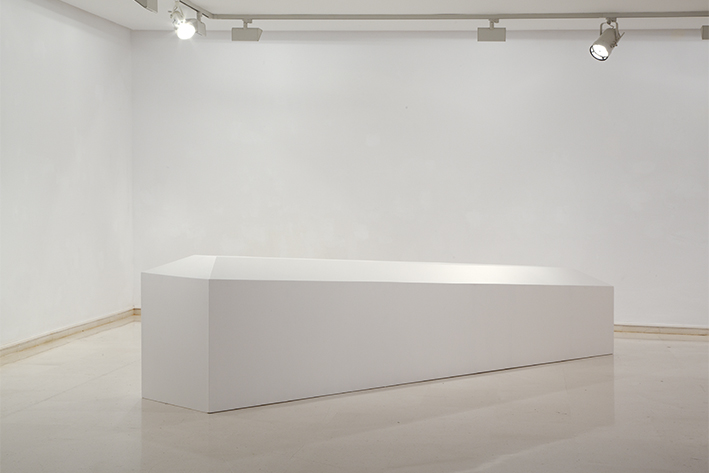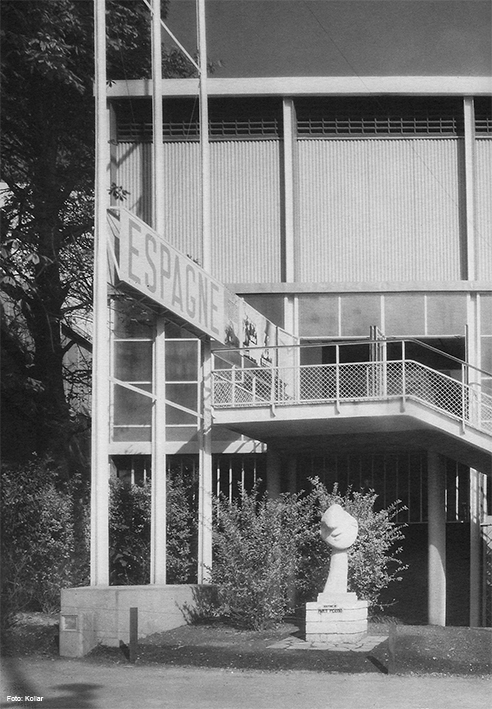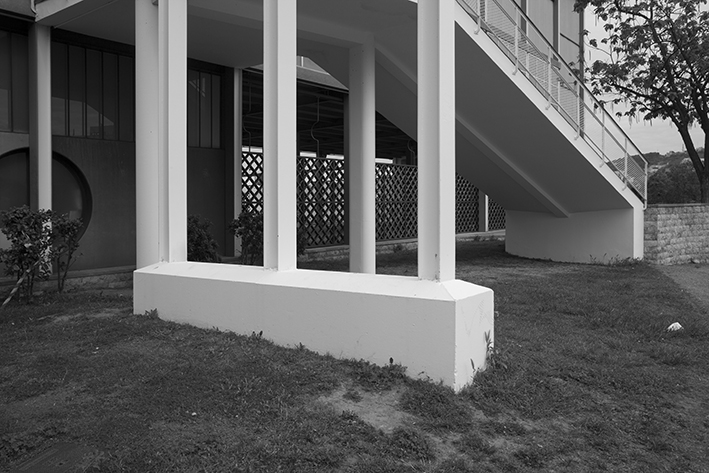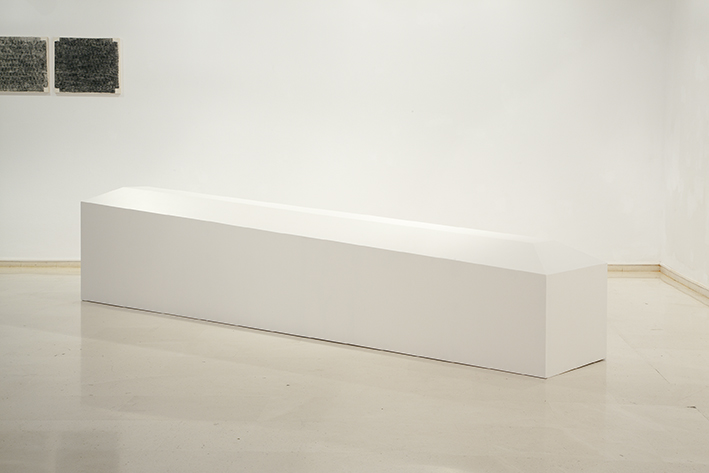



Stand for three flags, 2016
80 x 370 x 60 cm. Wood, paint.
The pavilions at international exhibitions were the showcases of a sovereign, commercial, territorial and technological power. The 1937 Spanish Pavilion built at the Paris International Exhibition, although it was intended as an anti-fascist sounding board, also represented a nation state.
When it came to installing the Republican, Catalan and Basque flagpoles, the slope of the land on which the Pavilion was built had to be taken into account. Due to the height of the masts, a rectangular concrete cubicle anchored to the ground was created.
Pedestal for three flags is a full-scale replica of this cubicle, but inclined to highlight the unevenness of the terrain and also to emphasise, on the one hand, the similarity of the formwork to a sepulchre or sarcophagus – thus highlighting the relationship between the flags and death – and on the other, the loss of balance or off-centre position with which the Republic and all its symbols ended up being submerged.
________
Exhibition:
Presence and Absence
G6 Gallery. IVAM. Valencia. From 26 January to 7 May 2017.
